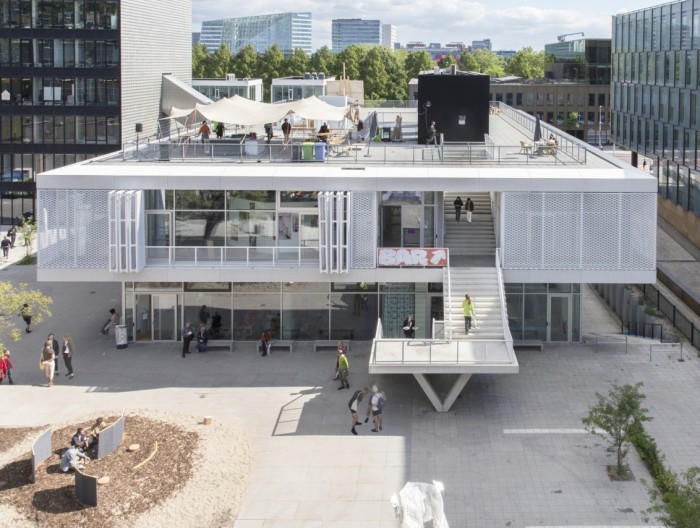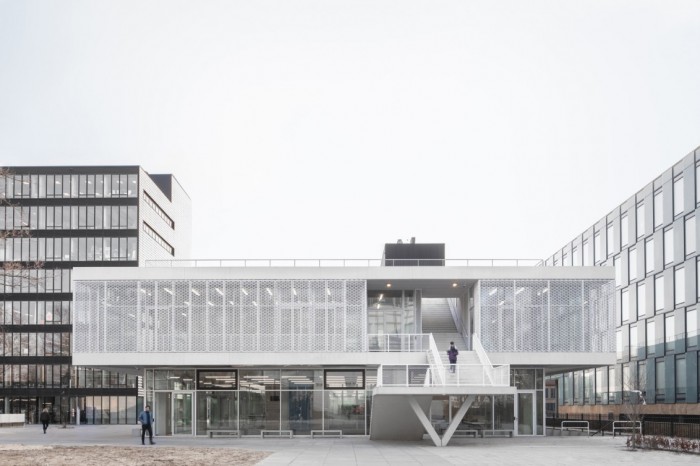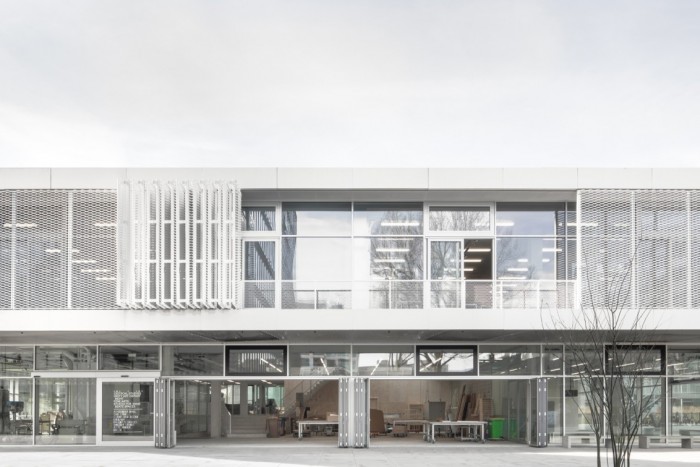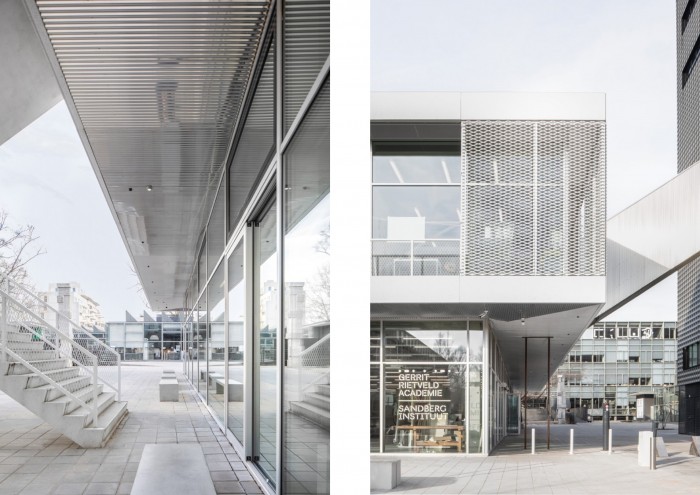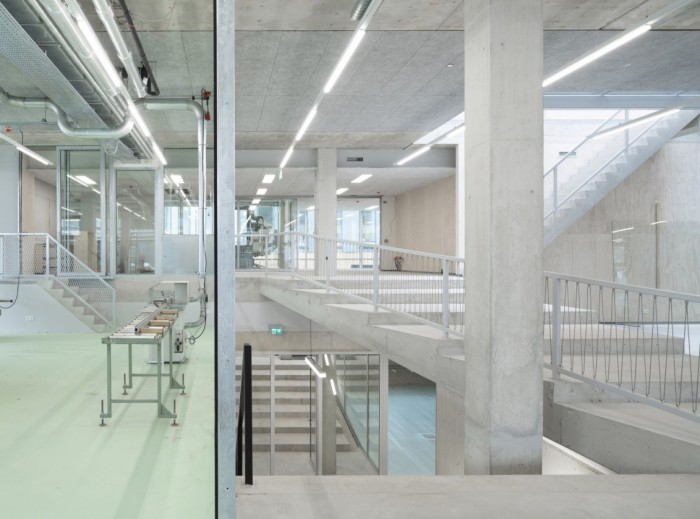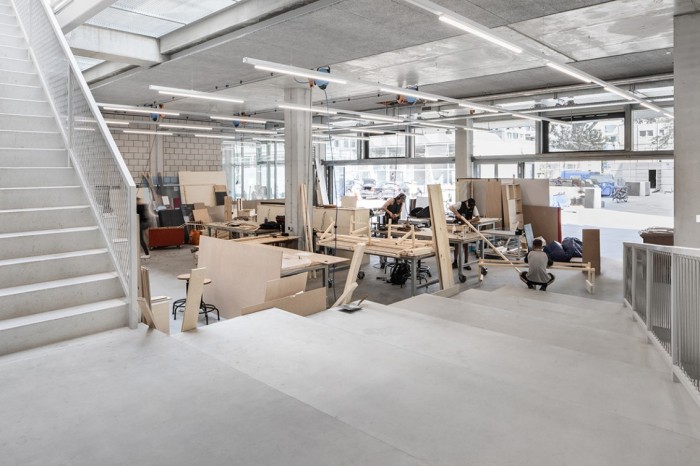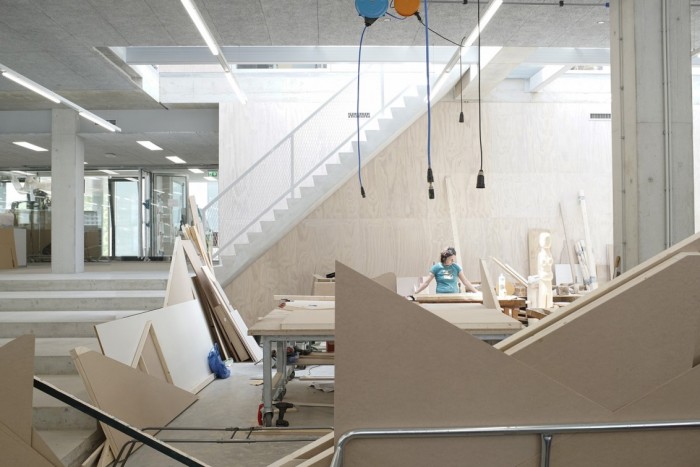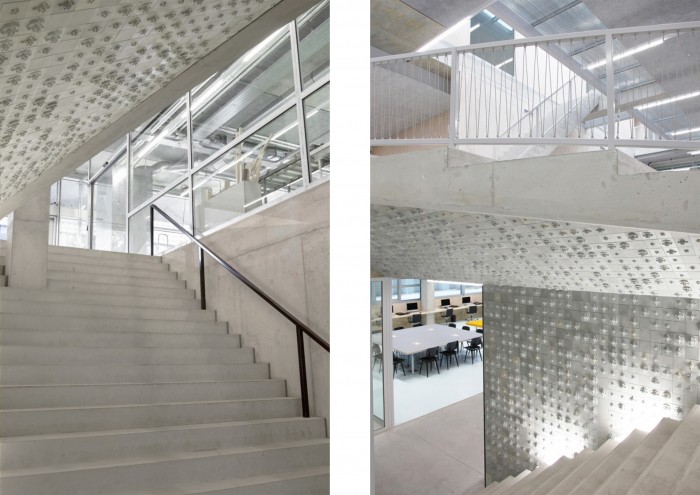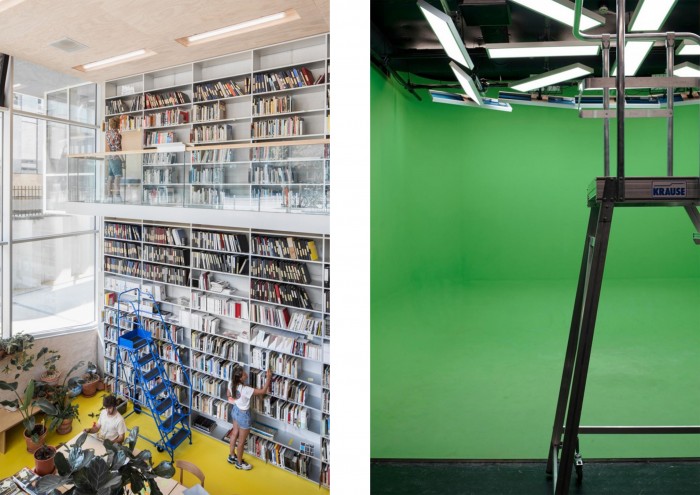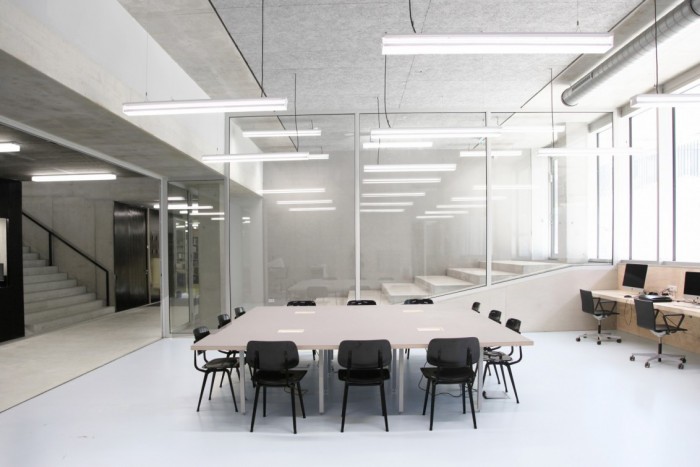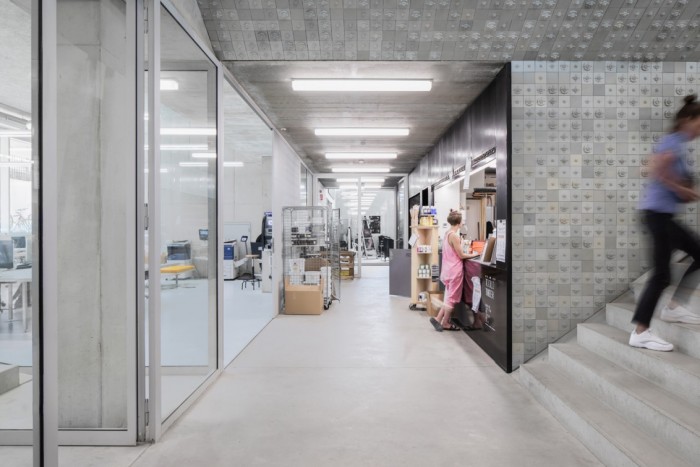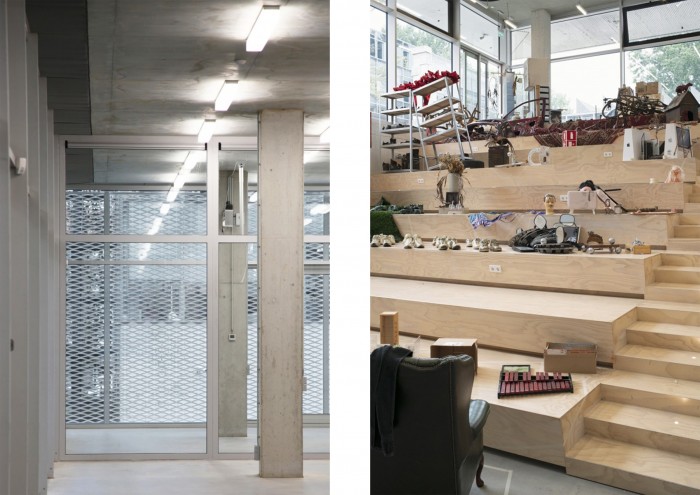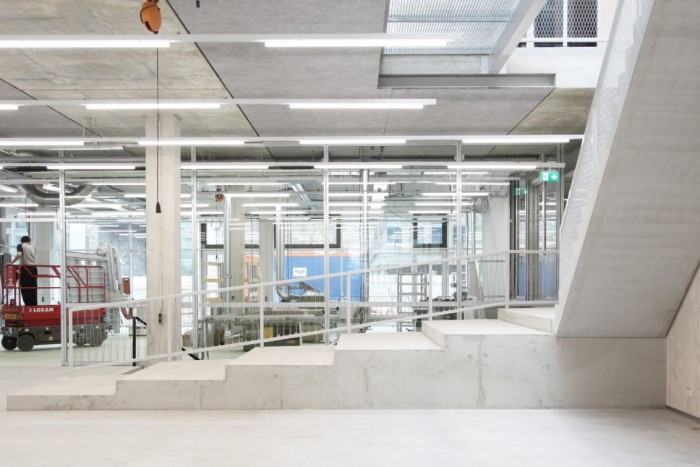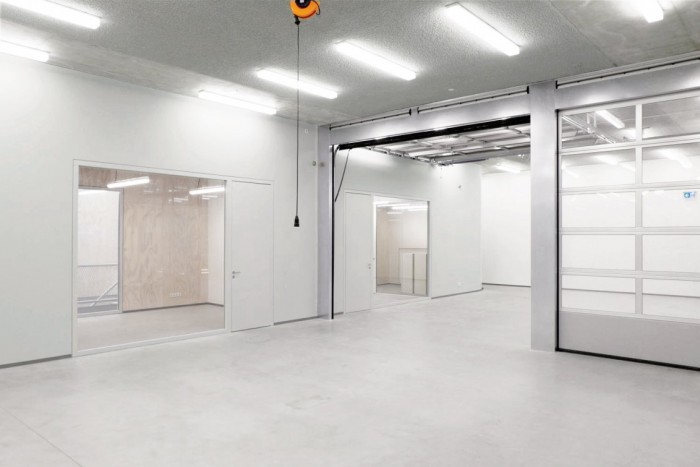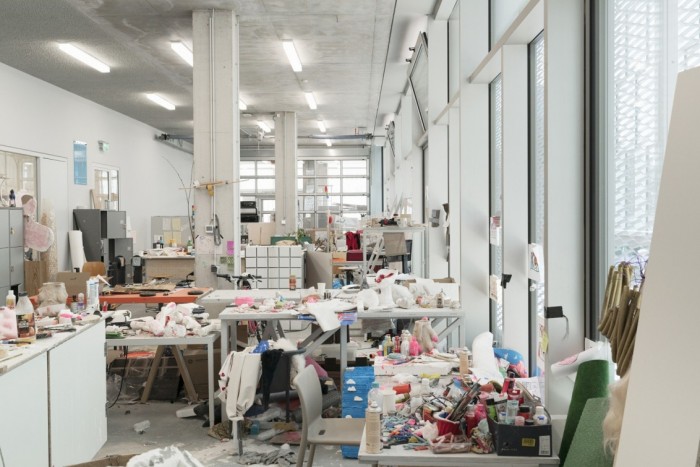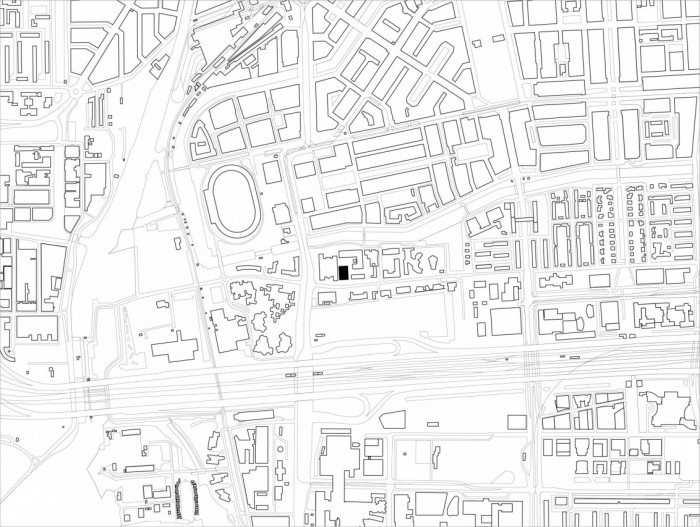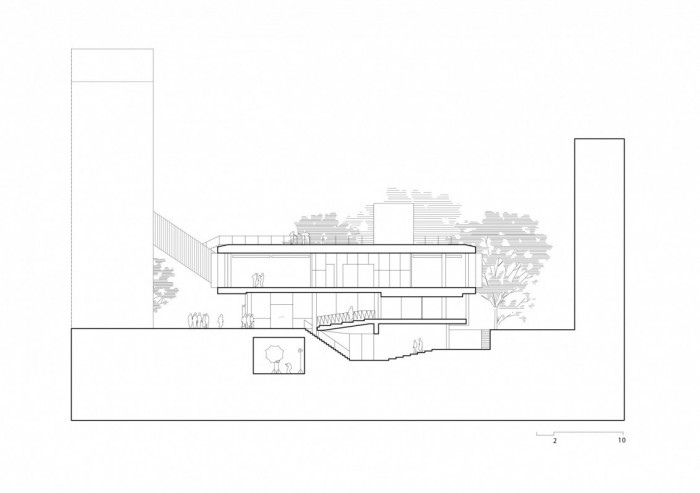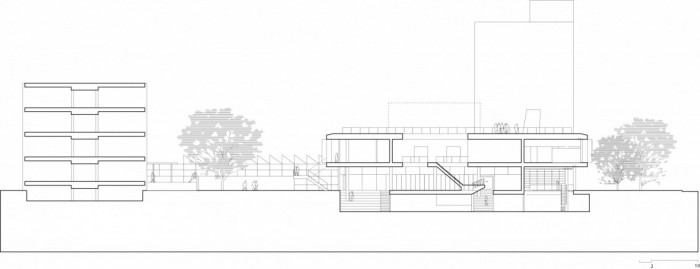The team FedLev in 2012 won the Do-It-Yourself competition for the extension of the Rietveld Academy and Sandberg Institute. Fedlev is a multidisciplinary cooperation of Sandra Stanionyte, Paulien Bremmer, Maze de Boer and Luca Carboni arising from the Rietveld Academy and Sandberg Institute.
http://www.rietveldacademie.nl/files/GerritWillem/team-2-presentation-booklet.pdf
http://www.dearchitect.nl/nieuws/2012/02/02/gerrit-rietveld-academie-ontwerpt-eigen-nieuwbouw.html
http://www.rietveldacademie.nl/nl/gerrit-willem-do-it-yourself
http://www.so-eu.com/news/rietveld-academy-and-sandberg-institute
Within the design, the future of the academy is seen in the increase in possibilities for collaboration, knowledge, exchange, and multi-disciplinary working. This in addition to the autonomous structure that characterizes the current education, separated off into departments. By looking at the position of the departments in a new light, by the adding of more public and collective spaces and a reorganization of the ground floor, connecting space for a new social structure will emerge. A collective space on the ground floor in which students and teachers from the different departments, as well as the bachelor’s and master’s programs, can meet to discuss, show, make work, and exchange ideas.
Not a free-standing building:
The design of the building is seen as part of a bigger whole. The extension is not a third building, but an addition to the two existing building volumes. The collective functions will be attached to the ground floor and divided evenly amongst the different building volumes. This will help ensure that, as far as possible, the new building will be used in an integrated way. Significant collective space in the plan is the ‘free space’ which can be ‘claimed’. Space that does not belong to any department and is also without any regulations governing its use. This can be outside space but also interior space that can be reserved by anyone for a certain time. The design foresees in about 10 of these so-called ‘project spaces’ in different kinds and sizes, spread throughout the entire plot.
Outdoor space:
By defining the edge of the site as the boundary of the building, the outdoor space in between the building volumes becomes part of the collective interior; a place to work, meet, relax and exchange ideas. The border between te inside and outside space is kept as ‘thin’ as possible. The greatest pressure on the outdoor space is generated by the addition of the building itself, Space taken up by the building is given back to the site by providing generous space on the roof.
Layout;
The souterrain gives room to the film studio, the assemblystair, the library, and the computer space. By light, sight, and broad stairs, the souterrain is spaciously made part of the ground floor resulting in one big collective landscape. By lack of corridors and the use of glass walls ‘the making’ is omnipresent. Theory and praxis border in close proximity to experience the education landscape as one whole environment of learning and experiment.
The entire eastern facade of the assembly hall on the ground floor can be slid open, creating an opportunity for the outdoor space to be added to the hall as extended workspace. Next to the assembly hall, are the workshops for wood and cad-cam. The first floor is one big 4 meters high space that can be subdivided into workspaces of different sizes, The space will be used by the Sandberg Institute. The roof of the building can be used as a free outside working space, It is strong enough to carry temporary constructions, works, and installations. The building has several entrances enabling more autonomous use if wished. The Sandberg Institute and the project space on the first floor of the new building have their own ‘backdoor’ and can therefore be detached from opening times of the academy to a certain extend.
Project’s background:
Compelled by a lack of space, a new educational direction (more master students and fewer bachelor students) and the desire to have all educational activities under one roof, the Gerrit Rietveld Academie and the Sandberg Instituut are collaborating on a development project at their current location in Amsterdam.
The choice was made to stay as close as possible to the educational vision of the academy and use the existing characteristics of the Rietveld and Sandberg community. In September 2011 a DIY competition was held won by Federation Levitation aka FedLev: an occasional multidisciplinary design team led by Paulien Bremmer, rooted in the Rietveld and Sandberg community. Fedlev’s other members were: artist Maze de Boer, student graphic design Luca Carboni, and student interior architecture Sandra Stanionyte. Fedlev extended with other designers of the network of Studio Bremmer. In the preliminary design phase FedLev joined forces with Hootsmans architectuurbureau delivering in collaboration the building in 2019
As part of the design, Fedlev introduced the concept of the ‘white spaces’; sub-projects within the design developed or executed on the invitation.
Location: Amsterdam, The Netherlands
Client: Stichting Gerrit Rietveld Academie
Program:
– 3500m2 education + workshops + interior,
– 2500m2 terrain,
– limited relocation of program in 14.000m2 existing buildingvolume
Status: delivery 2019
Lead architect: Paulien Bremmer
Competition + sketch design:
Fedlev team: Paulien Bremmer, Maze de Boer, Sandra Stanionyte, Luca Carboni,
collaborators: Marjan van Herpen, Joost Huyzer, Akira Negishi, Jan Willem Petersen, Luuc Sonke, Victor Verhagen, Stephanie Willocx.
Preliminary design – delivery:
Studio Paulien Bremmer | Fedlev icw Hootsmans architectuurbureau
team: Paulien Bremmer, with: Marjan van Herpen, Joost Huyzer, Anne Dessing,Victor van Hooff, Alexander Lefebvre, Anastasia Pandilovska, Milan Rikhof, Luuc Sonke, Vincka Struben, Claudia Temperelli.
Hootsmans Architectuurbureau: Rob Hootsmans, Daan Petri, Carlota Alvarado, Remco Bruggink, René Bos, Elke Demyttenaere, Pier Helder, Victor van Hooff, Jeroen Kreijne, Erik van Noord,
supervision sub-projects / white spaces by Paulien Bremmer
design sub-projects / white spaces by:
Interior library: Nils Norman icw Studio Paulien Bremmer | Fedlev + Hootsmans architectuurbureau
Interior Sandberg: Studio Anne Dessing
Ceramic wall-tiles: Caro de Jonge
Production ceramic wall-tiles: ceramic department
Curtain auditorium: Anastasia Starostenko
Outside furniture: Chris Bakker + Anne Nevandrup
Interior woodworkshop: woodworkshop Rietveld Academy icw Studio Paulien Bremmer | Fedlev + Hootsmans architectuurbureau
Execution interior woodworkshop: woodworkshop Rietveld Academy
Projectleader sub-projects: Femke Bijlsma
Contractor: Bouwbedrijf de Nijs
Building preparation: ABT Ingenieurs
Construction advise: Breed i.d.
Building physics: Möbius Consult
Cost calculation: Bremen Bouwadviseurs
Managment: Van Doorn Management for Architecture (till preliminary phase), ICS adviseurs + ABT Ingenieurs
Photography:Franziska Mueller Schmidt, Johannes Schwartz, Jeroen Verrecht
